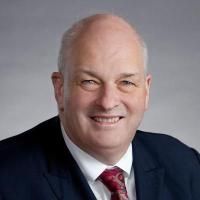Are the Arbeitsgemeinschaft Für Osteosynthesefragen (AO) Principles for Long Bone Fractures Applicable to 3-Column Osteotomy to Reduce Rod Fracture Rates?
Date
2022-06
Journal Title
Journal ISSN
Volume Title
Repository Usage Stats
views
downloads
Citation Stats
Abstract
Objective
The aim was to determine whether applying Arbeitsgemeinschaft für Osteosynthesefragen (AO) principles for external fixation of long bone fracture to patients with a 3-column osteotomy (3CO) would be associated with reduced rod fracture (RF) rates.Summary of background data
AO dictate principles to follow when fixating long bone fractures: (1) decrease bone-rod distance; (2) increase the number of connecting rods; (3) increase the diameter of rods; (4) increase the working length of screws; (5) use multiaxial fixation. We hypothesized that applying these principles to patients undergoing a 3CO reduces the rate of RF.Methods
Patients were categorized as having RF versus no rod fracture (non-RF). Details on location and type of instrumentation were collected. Dedicated software was used to calculate the distance between osteotomy site and adjacent pedicle screws, angle between screws and the distance between the osteotomy site and rod. Classic sagittal spinopelvic parameters were evaluated.Results
The study included 170 patients (34=RF, 136=non-RF). There was no difference in age (P=0.224), sagittal vertical axis correction (P=0.287), or lumbar lordosis correction (P=0.36). There was no difference in number of screws cephalad (P=0.62) or caudal (P=0.31) to 3CO site. There was a lower rate of RF for patients with >2 rods versus 2 rods (P<0.001). Patients with multiplanar rod fixation had a lower rod fracture rate (P=0.01). For patients with only 2 rods (N=68), the non-RF cohort had adjacent screws that trended to have less angulation to each other (P=0.06) and adjacent screws that had a larger working length (P=0.03).Conclusions
A portion of AO principles can be applied to 3CO to reduce RF rates. Placing more rods around a 3CO site, placing rods in multiple planes, and placing adjacent screws with a larger working length around the 3CO site is associated with lower RF rates.Type
Department
Description
Provenance
Subjects
Citation
Permalink
Published Version (Please cite this version)
Publication Info
Virk, Sohrab, Renaud Lafage, Shay Bess, Christopher Shaffrey, Han J Kim, Christopher Ames, Doug Burton, Munish Gupta, et al. (2022). Are the Arbeitsgemeinschaft Für Osteosynthesefragen (AO) Principles for Long Bone Fractures Applicable to 3-Column Osteotomy to Reduce Rod Fracture Rates?. Clinical spine surgery, 35(5). pp. E429–E437. 10.1097/bsd.0000000000001289 Retrieved from https://hdl.handle.net/10161/28015.
This is constructed from limited available data and may be imprecise. To cite this article, please review & use the official citation provided by the journal.
Collections
Scholars@Duke

Christopher Ignatius Shaffrey
I have more than 25 years of experience treating patients of all ages with spinal disorders. I have had an interest in the management of spinal disorders since starting my medical education. I performed residencies in both orthopaedic surgery and neurosurgery to gain a comprehensive understanding of the entire range of spinal disorders. My goal has been to find innovative ways to manage the range of spinal conditions, straightforward to complex. I have a focus on managing patients with complex spinal disorders. My patient evaluation and management philosophy is to provide engaged, compassionate care that focuses on providing the simplest and least aggressive treatment option for a particular condition. In many cases, non-operative treatment options exist to improve a patient’s symptoms. I have been actively engaged in clinical research to find the best ways to manage spinal disorders in order to achieve better results with fewer complications.
Unless otherwise indicated, scholarly articles published by Duke faculty members are made available here with a CC-BY-NC (Creative Commons Attribution Non-Commercial) license, as enabled by the Duke Open Access Policy. If you wish to use the materials in ways not already permitted under CC-BY-NC, please consult the copyright owner. Other materials are made available here through the author’s grant of a non-exclusive license to make their work openly accessible.
